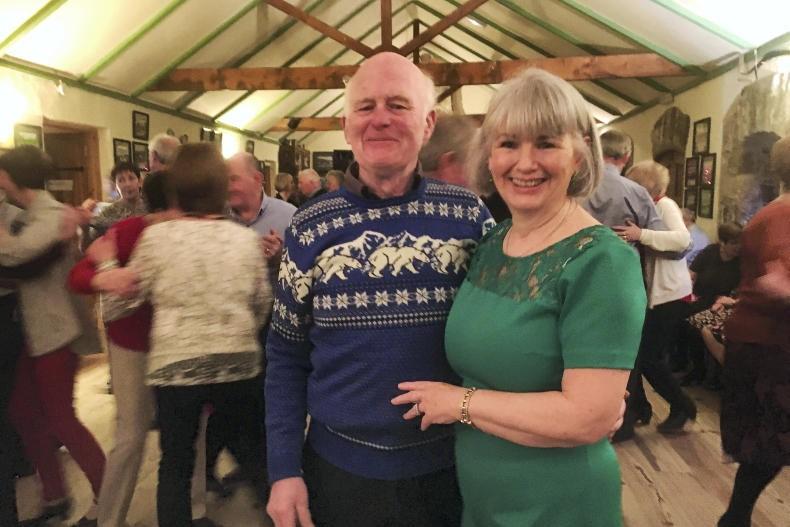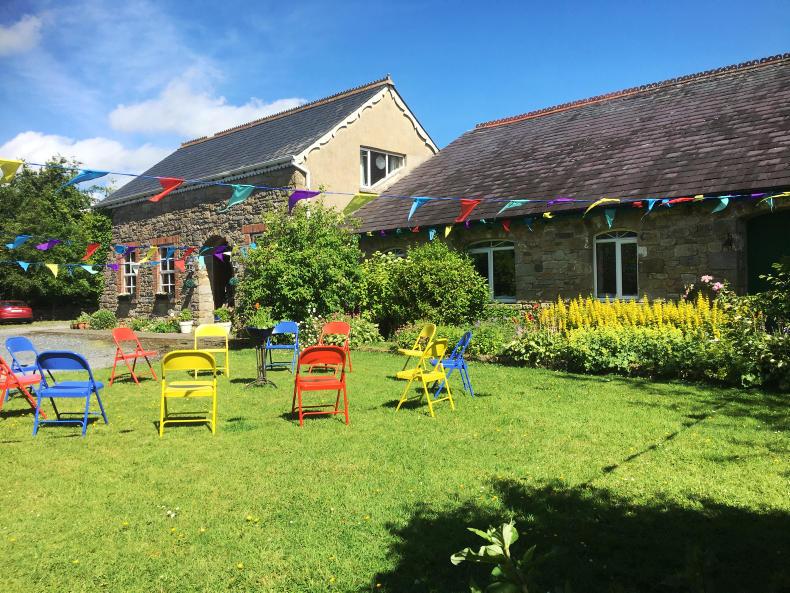
LOYALTY CODE:
The paper code cannot be redeemed when browsing in private/incognito mode. Please go to a normal browser window and enter the code there

LOYALTY CODE:
The paper code cannot be redeemed when browsing in private/incognito mode. Please go to a normal browser window and enter the code there
This content is copyright protected!
However, if you would like to share the information in this article, you may use the headline, summary and link below:
Title: Reader Writes: From social dancing to social distancing
With social dancing impossible thanks to COVID-19, avid dancer and dance teacher Marian Bradley fears a devastating impact on those that rely on the outlet for their physical and mental health
https://www.farmersjournal.ie/reader-writes-from-social-dancing-to-social-distancing-555846

ENTER YOUR LOYALTY CODE:
The reader loyalty code gives you full access to the site from when you enter it until the following Wednesday at 9pm. Find your unique code on the back page of Irish Country Living every week.

CODE ACCEPTED

You have full access to farmersjournal.ie on this browser until 9pm next Wednesday. Thank you for buying the paper and using the code.

CODE NOT VALID
Please try again or contact us.
For assistance, call 01 4199525
or email subs@farmersjournal.ie
Sign in

Incorrect details
Please try again or reset password
If would like to speak to a member of
our team, please call us on 01-4199525
Reset
password
Please enter your email address and we
will send you a link to reset your password

If would like to speak to a member of
our team, please call us on 01-4199525
Link sent to
your email
address
![]()
We have sent an email to your address.
Please click on the link in this email to reset
your password. If you can't find it in your inbox,
please check your spam folder. If you can't
find the email, please call us on 01-4199525.
![]()
Email address
not recognised
There is no subscription associated with this email
address. To read our subscriber-only content.
please subscribe or use the reader loyalty code.
If would like to speak to a member of
our team, please call us on 01-4199525
 This is a subscriber-only article
This is a subscriber-only article
Update Success !

Last March, the stark reality of life in lockdown waltzed into our lives, impacting thousands of people, as Ireland’s thriving social dance circuit came to a sudden stop in villages, towns and parishes across the country. Nobody knows for sure when the coronavirus pandemic will end, but what we do know is that social dancing, as we once enjoyed it, is a thing of the past.
Gone are footloose and fancy free nights of getting glammed up in our colourful dresses, sharp shirts and suede soled dance shoes and heading off to meet our friends to dance to the music of Pat McKenna and Glenshane Country, Jimmy Hynes and The Crusaders or the Michael Collins Band. Now, instead of social dancing, we are social distancing, with catastrophic consequences for a lot of older people, physically, mentally and emotionally.
A life spent dancing
My first memories of dancing date back to a dusty classroom in the old Ballyconnell National School in Co Cavan. At just five, I remember being put through my dance steps by Mrs Coffey from Clones
“Jump 1 2 3, jump 1 2 3, hop 1 2 3 4 5 6 7.” She hummed the tune and in all my innocence, I thought that was how it was done until I went to my first local Feis in Belturbet and had to perform to live music.
I continued to dance with her and then later at Christy May hops in the Star Ballroom, Ballyconnell, local dances in the Wonderland, Bawnboy and Erne Palais and Belturbet.
Nobody knows for sure when the coronavirus pandemic will end, but what we do know is that social dancing, as we once enjoyed it, is a thing of the past
Not forgetting carnival dances in marquees, set up in fields, which left a lot to be desired. From 1973, I danced seven nights a week in Dublin to all the top show bands in the National Ballroom, Olympic Ballroom and the Irish Club.
In 1983, I married my husband Joe, who I had first met at a local dance and we set up home in Milltown, a small rural village in Cavan.
A life from dancing
I quickly became involved in dancing and training teams for Scór, Réadóirí and parish concerts. In 1996, Joe and I opened Ballyhugh Cultural Centre and I began to teach céilí set, sean-nós, two hand dances, social dancing and revived the country house dancing tradition. In the late 80s, pubs and community halls started to run dances to help pay their overheads and since then, the whole dance band and social dancing scene has mushroomed.

On Sunday 8 March 2020, we went to Cavan Crystal Hotel for the weekly afternoon dance. The ballroom was packed with dancers from all over Cavan and the surrounding counties. We danced to Brendan Magee and Eugene Cunningham, totally oblivious to what was unfolding. We hugged, kissed and bid fair well to all our friends. We made arrangements to dance the following week, not knowing that our idyllic world was about to be turned upside down and that it would be a very long time before we would ever see them again.
On foot of a call from a GP friend the following day, laying out what COVID-19 would mean, I decided to cancel all events at Ballyhugh Cultural Centre, from our Monday night two hand dancing class to an eagerly awaited dance holiday in Torremolinos at Easter. Needless to say, dancing is my life and its closure has left a huge void for me and for countless people the length and breadth of Ireland.
Health from dancing
Until coronavirus, live music and social dancing were arguably the most popular form of entertainment in rural Ireland. Studies show that dancing has numerous health benefits for both body and mind and is an important factor in the treatment and management of many health issues in older people. Heart and lung condition, co-ordination and muscle strength are all known to improve, but so too is brain and memory function.
Dancing is my life and its closure has left a huge void for me and for countless people the length and breadth of Ireland
Apart from the physical and mental benefits, it gets you out of the house, paramount to overcoming isolation and loneliness. From my teaching experience, I have witnessed many people who have never danced before overcome shyness and awkwardness and learn to dance without too much bother. With newfound self confidence, they discover a renewed purpose in life that they never dreamt of and go on to embrace a whole new way of living, even in their twilight years. In fact, the energy in a dance space, the stimulating music and the need to concentrate on steps and perform movements in synergy with a partner, does not leave much room to be self-conscious - you just enjoy the moment. All the while, a key protein that acts like a fertiliser for brain cells is activated, which stimulates the motor and sensory circuits in the brain.

Part of what makes dancing unique from other forms of exercise is the music. Musical rhythm stimulates certain areas of the brain associated with dopamine, a chemical that induces a positive mood in terms of happiness and wellbeing. Many dancers rarely consume alcohol, getting their high from dancing. As the days pass on, the future of social dancing remains uncertain. The physical contact between dance partners is a major concern. In my opinion, social dancing is badly needed in these strange times to help address the physical and psychological needs of some of the most vulnerable people in our society.
And I, for one, eagerly await its return, in whatever guise that may be.
SHARING OPTIONS: